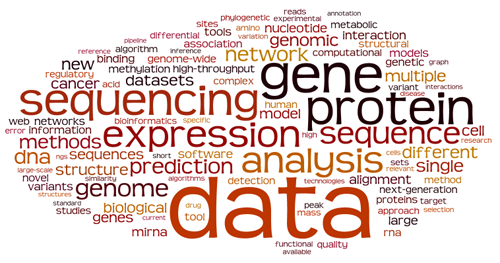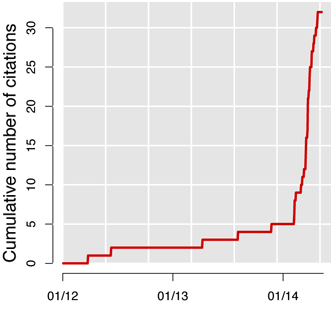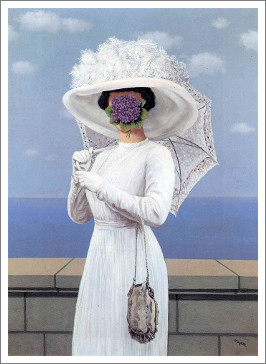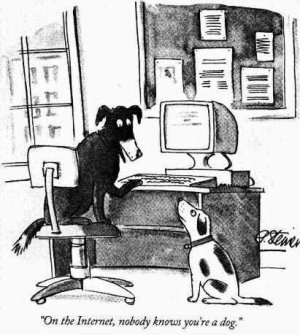•
the Blog
What is bioinformatics about?
By Guillaume Filion, filed under
PubMed,
journals,
bioinformatics,
information retrieval.
• 01 June 2015 •
A brief note published a few weeks ago initiated a discussion on the blogosphere about who is a bioinformatician and who is not. According to Wikipedia
bioinformatics combines computer science, statistics, mathematics, and engineering to study and process biological data.
To see how the community defines itself, I downloaded the abstracts of Bioinformatics from 2014 (for a total around 1000 articles, extracted the most relevant keywords and put the top 100 terms in a word cloud where a word size shows its frequency*.

Obviously, bioinformatics is about data, mostly gene/protein sequences and expression. It is also good to know that bioinformatics likes genomes and networks, and that it has more affinities with structural biology than with evolution.
The favourite organism of bioinformaticians is Homo sapiens, actually it is the only one mentioned in the word cloud, and when bioinformaticians work on a disease, it is cancer.
When bioinformaticians describe their work, it is “novel” and “new”, and what they talk about is “biological”, “different”, “multiple” and “single” (the last two are usually followed by “sequence alignment” and “nucleotide polymorphism”). It is also “functional” and “available”, but somewhat less. I expected it to be “fast” and “accurate”, but...
A flurry of copycats on PubMed
By Guillaume Filion, filed under
PubMed,
journals,
information retrieval.
• 04 October 2014 •
It started with a search for trends on PubMed. I am not sure what I expected to find, but it was nothing like the “CISCOM meta-analyses”. Here is the story of how my colleague Lucas Carey (from Universitat Pompeu Fabra) and myself discovered a collection of disturbingly similar scientific papers, and how we got to the bottom of it.
Pattern breaker
 CISCOM is the medical publication database of the Research Council for Complementary Medicine. Available since 1995, it used to be mentioned in 2 to 3 papers per year, until Feburary 2014 when the number of hits started to skyrocket. Since then, “CISCOM” surfs a tsunami of one new hit per week.
CISCOM is the medical publication database of the Research Council for Complementary Medicine. Available since 1995, it used to be mentioned in 2 to 3 papers per year, until Feburary 2014 when the number of hits started to skyrocket. Since then, “CISCOM” surfs a tsunami of one new hit per week.
But this is not what drew my attention, such waves are not unheard of on PubMed. For instance, the progression of CRISPR/Cas9, is more impressive. It was the titles of the hits that convinced me that something fishy was going on: all of them are on the model “something and something else: a meta-analysis”.
The strange pattern caught my attention, but I somehow missed its significance and put this in the back of my mind. It was only later that Lucas convinced me...
Detecting trends in culture
By Guillaume Filion, filed under
Changepoint detection,
PubMed,
information retrieval.
• 16 July 2014 •
 On June 28, 1914, Archduke Franz Ferdinand was assassinated in Sarajevo. One month later, Austria-Hungary declared war on Serbia, to which Russia responded by declaring war on Austria-Hungary, forcing its allies France and Great Britain into the war. In the aftermath, Germany honoured its defensive pact with Austria-Hungary and declared war on France, plunging Europe in a chaos that nobody had predicted.
On June 28, 1914, Archduke Franz Ferdinand was assassinated in Sarajevo. One month later, Austria-Hungary declared war on Serbia, to which Russia responded by declaring war on Austria-Hungary, forcing its allies France and Great Britain into the war. In the aftermath, Germany honoured its defensive pact with Austria-Hungary and declared war on France, plunging Europe in a chaos that nobody had predicted.
Cliodynamics, the mathematical approach to History, still has a long way to go to reach the accuracy of Isaac Asimov’s fictive psychohistory. Its closest non science-fiction relative, culturomics, relies on the idea that historical trends are accessible through the digital literature. As Jean-Baptiste Michel explains on TED, the course of History leaves a strong mark on the things we write about, and on the way we write about them.
But historical events are not the only thing we write about. The digital records are mostly about anything we find interesting. Knowing what is talked about is not science-fiction, it is actually fairly easy. More challenging is to know whether a topic is currently on the rise or merely fluctuating, which is a changepoint detection problem. Research on changepoint problems...
The geometry of style 
By Guillaume Filion, filed under
planktonrules,
co-inertia analysis,
information retrieval,
IMDB,
principal component analysis,
series: IMDB reviews.
• 20 July 2012 •
This is it! I have been preparing this post for a very long time and I will finally tell you what is so special about IMDB user 2467618, also known as planktonrules. But first, let me take you back where we left off in this post series on IMDB reviews.
In the first post I analyzed the style of IMDB reviews to learn which features best predict the grade given to a movie (a kind of analysis known as feature extraction). Surprisingly, the puncutation and the length of the review are more informative than the vocabulary. Reviews that give a medium mark (i.e. around 5/10) are longer and thus contain more full stops and commas.
Why would reviewers spend more time on a movie rated 5/10 than on a movie rated 10/10? There is at least two possibilities, which are not mutually exclusive. Perhaps the absence of a strong emotional response (good or bad) makes the reviewer more descriptive. Alternatively, the reviewers who give extreme marks may not be the same as those who give medium marks. The underlying question is how much does the style of a single reviewer change with his/her...
Are you human?
By Guillaume Filion, filed under
Python,
Information retrieval,
movies,
IMDB,
series: IMDB reviews,
crawler.
• 08 July 2012 •
On the Internet, nobody knows you're a dog.
This is the text of a famous cartoon by Peter Steiner that I reproduced below. This picture marked a turning point in the use of identity on the Internet, when it was realized that you don't have to tell the truth about yourself. The joke in the cartoon pushes it to the limit, as if you do not even have to be human. But is there anything else than humans on the Internet?

Actually yes. The Internet is full of robots or web bots. Those robots are not pieces of metal like Robby the robot. Instead, they are computer scripts that issue network requests and process the response without human intervention. How much of the world traffic those web bots represent is hard to estimate, but sources cited on Wikipedia mention that the vast majority of email is spam (usually sent by spambots), so it might be that humans issue a minority of requests on the Internet.
In my previous post I mentioned that computers do not understand humans. For the same reasons, it is sometimes difficult for a server to determine whether it is processing a request...
The elements of style
By Guillaume Filion, filed under
movies,
series: IMDB reviews,
information retrieval,
IMDB,
natural language processing.
• 17 June 2012 •
Let us continue this series of posts on IMDB reviews. In the previous post I used mutual information to identify a consistent trend in the reviews: very positive and very negative reviews are shorter than average reviews by about 2 sentences. But how can we give a full description of the style of reviews? And, what is style anyway?
Let's refer to the definition.
style /stīl/: A manner of doing something.
So style covers every feature of the text, from lexical (use of the vocabulary) to semantic (meaning attributed to expressions). The question of style has kept the field of Natural Language Processing (NLP) very busy because this is a strong indicator of the content of a text. What is it about? How reliable is it? Who is the author? However, most of the emphasis is on the syntax, because semantics is still a long and painful way ahead. Alan Turing, by his claim that a machine is able to think if it is able to communicate with humans in their natural languages (the Turing test), sparked a general interest for the question of language in the field of artificial intelligence. A bunch of chatting robots...
Did Sweden cheat at Eurovision?
By Guillaume Filion, filed under
Twitter,
Eurovision,
information retrieval.
• 30 May 2012 •
In my previous post, I promised to go deeper into IMDB reviews, but I defer it until I deal with a more pressing issue.
Last Saturday was the Eurovision song contest. Somehow, my girlfriend managed to convinced me to sit through it (apologies to my fellow disincarnated academic researchers for such a treachery to our quest for knowledge).
Outside the epic performance of Ireland, already consecrated in the pantheon of memes, the show was plain boring. More specifically, it was redundant. Many songs were duplicates of each other and most were clear wannabes of successful artists (poor Amy, if you had seen what Italy did to you).
It was such a surprise, a shock I should say, that Sweden won the contest with the song Euphoria. Not that it was bad. Rather, that it was exactly like the songs we keep hearing every summer for more than 20 years. So, is this me getting old and not being able to recognize what's good music, or is there something fishy going on? I realized that the voting process is completely opaque and that nothing says that the IT counts the votes in a fair way. It would be...
Lost in punctuation 
By Guillaume Filion, filed under
information,
series: IMDB reviews,
information retrieval,
IMDB,
movies.
• 26 May 2012 •
What is the difference between The Shawshank Redemption and Superbabies: Baby Geniuses 2? Besides all other differences, The Shawshank Redemption is the best movie in the world and Superbabies: Baby Geniuses 2 is the worst, according to IMDB users (check a sample scene of Superbabies: Baby Geniuses 2 if you believe that the worst movie of all times is Plan 9 from Outer Space or Manos: the Hands of Fate).
IMDB users not only rank movies, they also write reviews and this is where things turn really awesome! Give Internet users the space and freedom to express themselves and you get Amazon's Tuscan whole milk or Food Network's late night bacon recipe. By now IMDB reviews have secured their place in the Internet pantheon as you can check from absolutedreck.com or shittyimdbreviews.tumblr.com. But as far as I am aware, nobody has taken this data seriously and try to understand what IMDB reviewers have to say. So let's scratch the surface.
I took a random sample of exactly 6,000 titles from the ~ 200,000 feature films on IMDB. This is less than 3% of the total, but this amount is sufficient to...
What’s in a title?
By Guillaume Filion, filed under
PubMed,
journals,
information retrieval.
• 10 March 2012 •
Trying to come up with a name for the blog, I wondered what a good title should be. If you ever wrote a scientific article, you probably found yourself in the same situation. You try to surf the trend, mix in carefully selected buzzwords and present the work under its sexiest side. Sexy, that is, to the veterans. Admittedly, not everyone will crave to read “Epithelial cell adhesion molecule (EpCAM) complex proteins promote transcription factor-mediated pluripotency reprogramming” (no offense intended, I just took the first title that showed up in PubMed).
Meta-analysis of scientific literature tells us a lot about how science and scientific discourse change over time. A simple title word analysis of the articles published in Nature in an 8 year interval shows how some topics fell from grace, whereas others rose to the top.
The struggle-for-hype allows us to tell what scientists and editors find exciting at a given time. To play with this idea, I collected all the titles of the Nature articles published in 2002 and in 2010, and ran Wordle on them. The size of a word in the cloud is proportional to its occurrence in the corpus...

